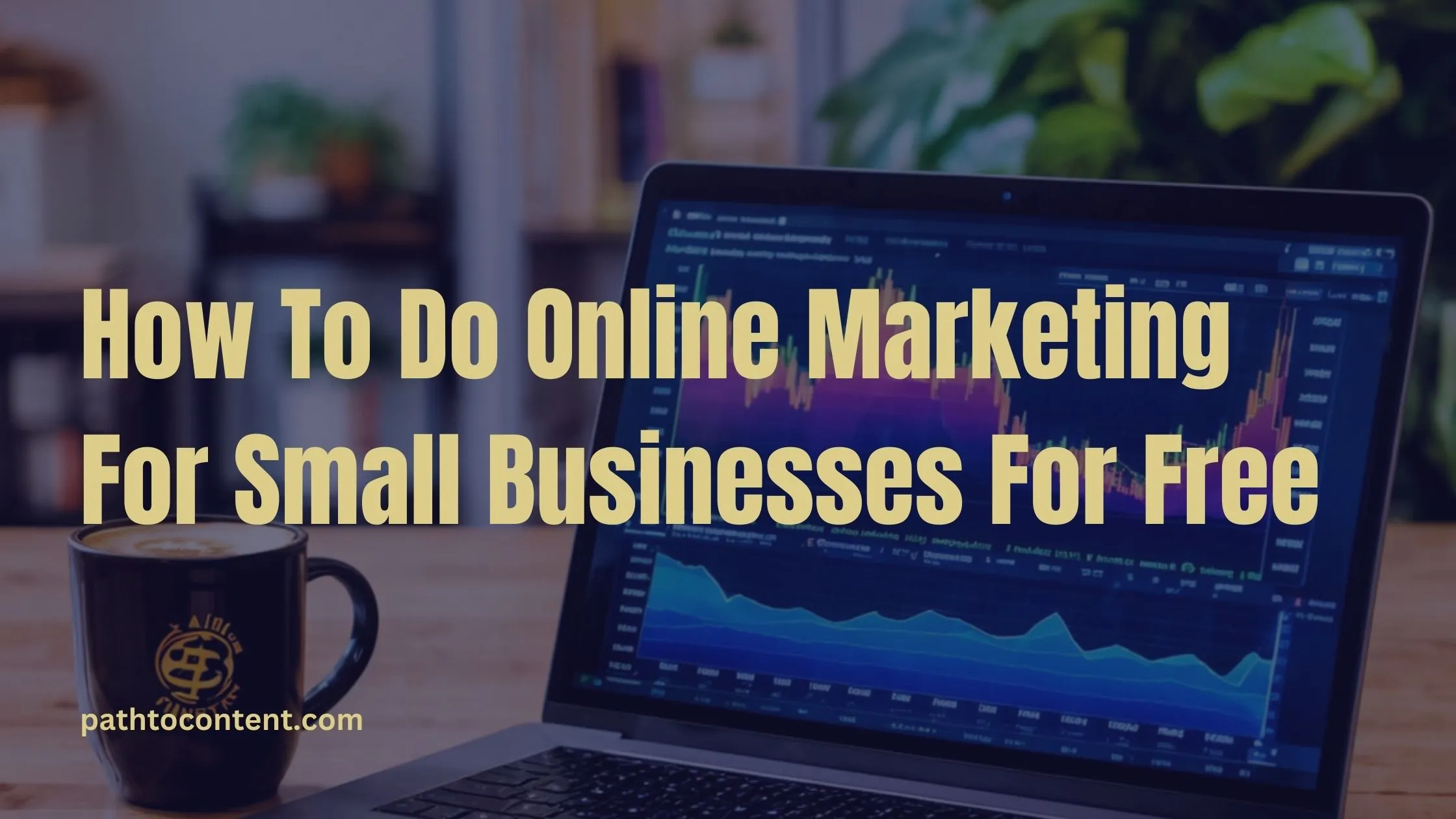Whether you run a pet store, a marketing agency, or an IT consultancy—you need an online presence. More importantly, if you’re a small business.
Even businesses with offline success need a strong online side because offline success doesn’t easily transcend to the online world.
“We don’t have a huge budget to allot to online marketing,” my leads often say. You don’t need a big budget. I’m helping my clients do online marketing for free.
Yep, building and expanding your business through a complete organic or low-cost marketing plan is possible.
How to do online marketing for small businesses for free, you ask? This article is my answer.
How To Do Online Marketing Small Businesses: Develop A Marketing Strategy

First things first, you need an online marketing strategy to decide how to lay out your marketing roadmap.
It entails understanding your audience, their pain points, your services/products, how they’ll help your audience and more.
Understand Your Audience
Who are you serving? Many businesses make the mistake of marking their audiences too broad.
As a content strategist, I can have an audience as any brand or business that needs content marketing services. But I can also go specific by saying I work with small-scale businesses and budding startups to help them create an online presence.
You see the difference?
Now, my target audience is narrow so that I can reach more prospects. Your audience will be more relevant and of higher quality the more precisely you target.
At this step, you need to figure out who that targeted customer group will be.
Then, lay out every important pain point your target audience faces, causing them losses. List every bad decision or mistake they make that costs them financially, as well as clients, reputation, branding, positioning costs, etc.
Link Between Your Service And Audience’s Needs
Now that you have covered every reason your target audience suffers, the next critical step is demonstrating how your services can address and alleviate these issues. Map your services to their pain points. Create a clear correlation between audience pain points and your services.
Translate the services into the audience’s benefits. When you buy something, do you worry about the product’s features or the benefits it offers to make your life easier?
Remember, customers think in terms of benefits. Show them just that. Ensure the connection between the pain points and your services is easy to understand. Define the unique value of your product/service that differentiates you from competitors.
Map out the customer’s journey from awareness to conversion, ensuring your service meets their needs at each stage.
Set Clear Goals And Objectives
To make your online marketing plan successful, you need to set clear goals and objectives.
What particular results do you expect?
The examples include increasing website traffic, sales, leads, brand exposure, and customer interaction. Be precise about the results.
What metrics are you going to measure?
Select the metrics that will enable you to monitor your goals’ progress. For example, if your objective is to boost traffic, track metrics like unique visitors, page views, and bounce rate. Keep an eye on lead-generating KPIs like cost per lead, lead volume, and conversion rates. By choosing the appropriate KPIs, you can make data-driven adjustments and track progress.
What will be the timeframe of the project?
Decide on a precise deadline for accomplishing your objectives. This could be three months as a short-term objective, six to twelve months as a medium-term objective, or one to two years as a long-term objective. Establishing deadlines guarantees that everyone in your team works toward the same goals and helps you stay focused. It also makes regular progress assessments and timely strategy revisions possible.
What marketing channels will you use?
Choose the marketing channels to help you reach your target audience and accomplish your goals. These could involve email marketing, paid advertising, social networking platforms like Facebook, Instagram, and LinkedIn, content marketing like blogging, and SEO. By choosing the right channels, you can maximize your resources and get better results by focusing your efforts where they will have the biggest impact.
Competitor Analysis
List your direct and indirect competitors.
Businesses that provide you the same or very similar goods or services are your direct competitors. They also have the same target audience. Any change in their strategy (positive or negative) can directly impact you.
Those who don’t provide an identical or comparable good or service but who share your target market or problem-solving approach are considered indirect competitors. The only difference is the services offered.
For example: A bakery offering coffee is an indirect competitor of a coffee shop.
Study your competitors’ digital presence, content strategy, social media activity, SEO efforts, and paid advertising.
Identify areas where your competitors are lacking and where you can offer something better or different. Also, list the areas where you felt the competitors did well, and you can replicate it.
Remember, you don’t want to copy your competitors, but use them as a guide to help you stay on the right track.
If they’re succeeding, they must’ve done something right. Find out what it is. The market is always open for something better. See how you can outperform your competitors by analyzing their performance.
How to identify your competitors:
Start with a simple Google search. The top-ranking sites are most likely the companies that can be your potential competitors. Or download the industry reports from the last 5-10 years and analyze the key players listed in your industry.
Use tools like SparkToro to find the accounts or sites your target audience frequents. These are your direct competitors, as your audience is engaging with them.
10 Steps To Build A Complete Online Marketing Plan For Small Businesses For Free
Build a Website
Now, we’re done with the research part. If you ask me, this is the most crucial part of building a marketing plan. Get this right, and the implementation will come easily. Mess it up, and implementation will never yield results.
So, let’s get started with the implementation by designing your website. These are a few essentials for your company website.:
Homepage
The homepage should convey your brand’s value immediately. Right from the headline to the main CTA, it should all flow naturally—leading the visitor to transition smoothly.
That’s where the headline comes into play. It should be catchy, simple so even a 7th grader can understand, and benefit-oriented. Grab your reader’s attention right away without wasting a second’s time.
Then, add the features and benefits of your services, followed by relevant social proof. To establish credibility, provide case studies, testimonials, or the logos of businesses you’ve collaborated with. Engaging with your business assures visitors that they are making a sensible decision thanks to social proof.
A compelling call to action (CTA) should come next. Point visitors toward the action you want them to take next, be it purchasing a product, subscribing to your newsletter, or investigating your services.
Here’s an example of a great homepage by FreshBooks.
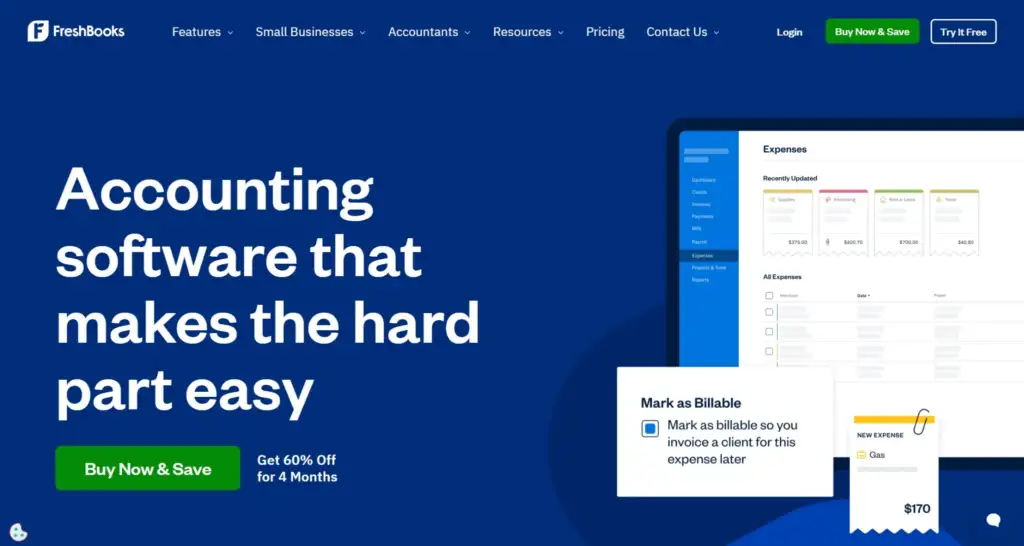
Service page
The service page is where you convert the visitor’s interest into your desired action. You can have one or multiple service pages depending on the services you offer.
Clearly describe each service and focus on the benefits first. Create an organized layout that structures the page with easy-to-read sections. Add images, infographics, screenshots, and testimonials to support your claims.
An FAQ section is often overlooked but is key. When you address the common questions, customers are more confident when purchasing. FAQs reduce friction and increase sales, providing reassurance and confidence to your potential customers.
Here’s a great service page by Hootsuite.
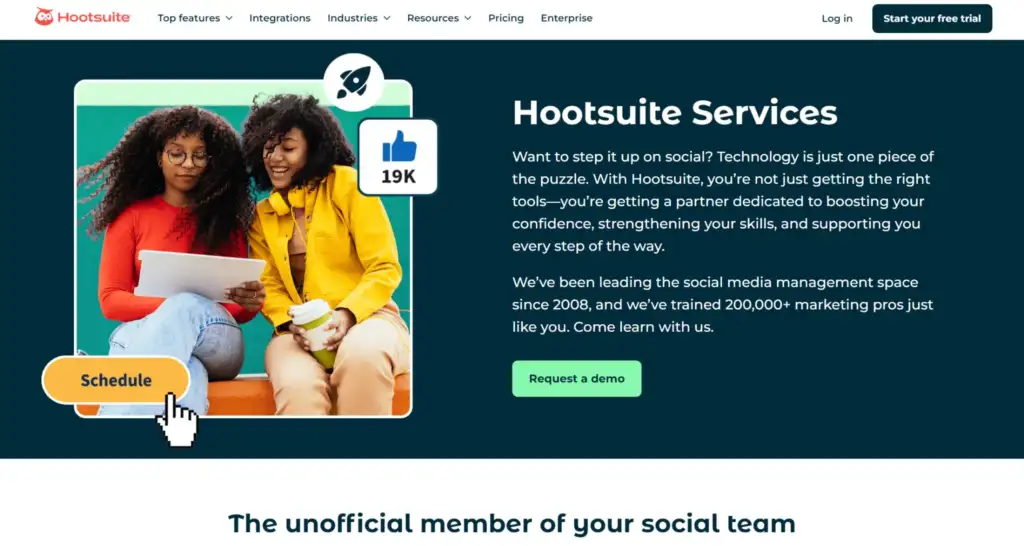
About page
Don’t get the about page mistaken with a chance to paint a linear picture of your backstory. Yes, the About section is your backstory, but the story’s hero is still your audience.
You need to share your founding tale in a way that shows your audience why you’re the best to do business with.
Take this chance to introduce your team and their roles, expertise, and personal background. This not only adds credibility but also helps to personalize the experience for visitors.
Add photos of your team, office, events, etc., to showcase your company culture. It also helps with the E-E-A-T guidelines as search engines see you’re a real person or team running the business, not a bot.
Here’s a feel-good and trust-building about page by Hubspot.
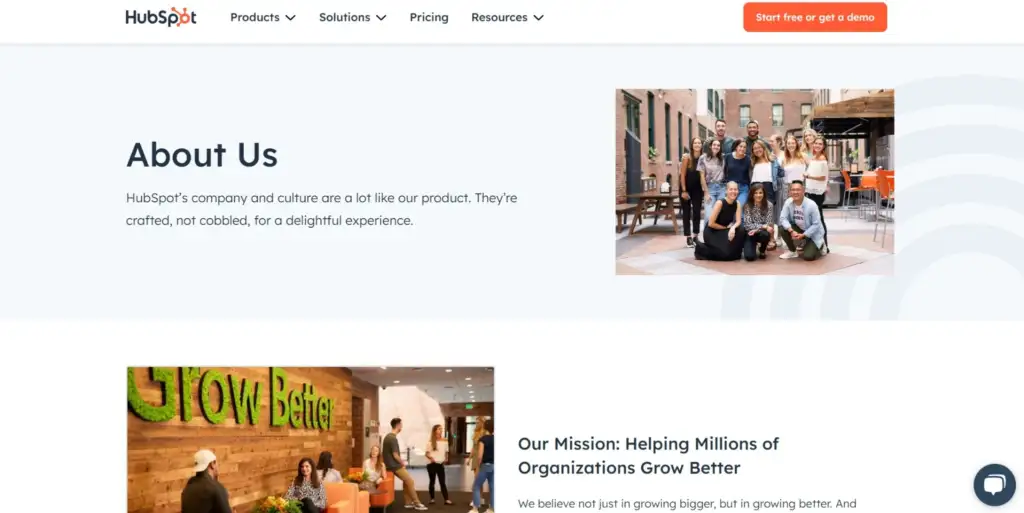
Technical aspects
Beyond design and content, your website’s technical performance is crucial. Poor technical implementation can lead to slow load times, security issues, and a poor user experience.
Technical issues can drive visitors away. Keep your site speed optimized to ensure it loads quickly. Use tools like PageSpeed Insights and GTMetrix to identify problems. WP Rocket is one of the best caching tools to help improve website speed.
Use mobile responsive designs, as 60% of users browse the web using mobiles.
Use an SSL certificate to secure your website, encrypting any data that is sent back and forth between it and its visitors. This is crucial for safeguarding private data and influences Google’s ranking.
Use on-page SEO best practices, such as ensuring your URLs are clear and informative and optimizing title tags, meta descriptions, and alt tags for images.
Optimize for Local SEO & Business Directories
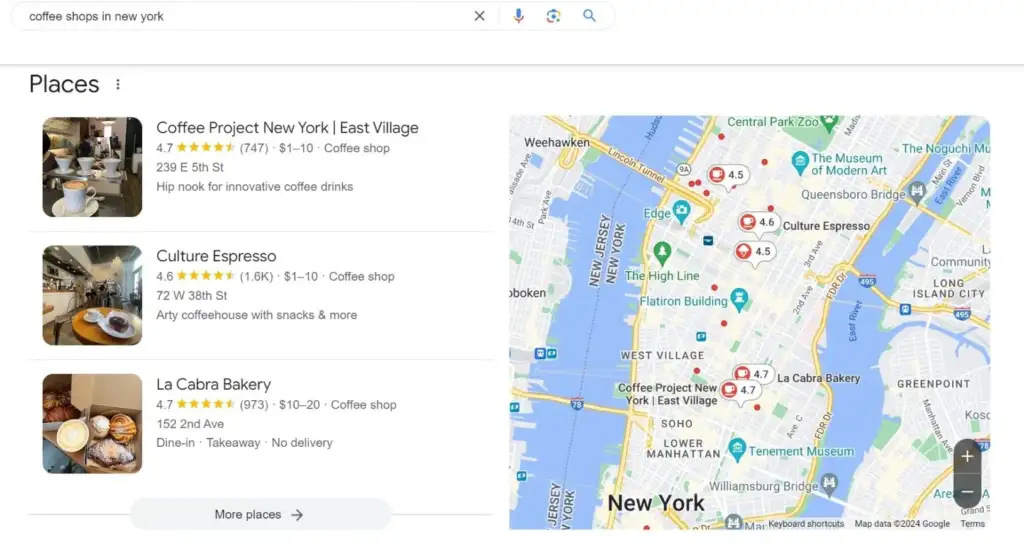
Whether you’re a local business or not, adding your business to Google My Business only helps. Local SEO works like a charm if you’re a local brand. Local SEO focuses on improving your online presence in specific geographic areas, making it easier for local customers to find and engage with your business.
The first benefit of doing local SEO right is that your business appears in the top search results for local queries. It also results in more targeted traffic, more conversions, higher trust, and a competitive edge over your competitors.
To get started with local SEO, create your Google My Business (GMB) Profile. Add high-quality images of your store, product, services, team, etc., to build a positive impression. Encourage your customers to review your service on the GMB profile.
Additionally, create content that resonates with your local audience by incorporating local keywords, news, or events. Blog posts, landing pages, and even social media updates can be tailored to address local interests and needs. Building backlinks from local websites, such as local news outlets, community blogs, or local business associations, can boost your local SEO.
Finally, create accounts on niche and local directories such as Yelp, Yellow Pages, Foursquare, Apple Maps, etc., to build local backlinks to your site. Ensure you keep your business’s NP information consistent across all local business directories.
Master Traditional SEO
While local SEO is crucial for businesses targeting a specific geographic area, mastering traditional SEO is essential for improving your online visibility on a broader scale. Traditional SEO focuses on optimizing your website and content to rank higher in organic search results, regardless of location.
Focus on:
- Proper keyword research
- On-page SEO optimization
- Content creation and optimization
- Off-page SEO strategies
- Technical SEO
Create Blogs Targeting BOFU Keywords
Blogging is hands down the best content marketing medium for generating recurring, evergreen, targeted, and sustainable traffic that converts.
Other channels, such as social media and paid promotion, require consistent efforts. If you stop putting in the work, the results will disappear.
Paid ads work only until you bid for them. Social media posts get lost in the void after a few days of publishing. That’s not the case with blogging.
But you can’t forget that blogging also requires investment. But there’s a way to maximize the results with a lesser effort.
Target the BOFU keywords. These are the bottom-of-the-funnel keywords with a commercial search intent. When you target these keywords, you not only create educational content but also posts with the goal of converting visitors.

When you get these BOFU articles ranked early on, you yield the ROI faster, which you can then put back into the blog marketing and target more traffic-generating or top-of-the-funnel content.
For example, if I’m a real estate business, I’d first target the BOFU keywords such as “property management services in [city],” “Buy a condo in [city],” “New homes for sale in [city],” “Real estate engagement opportunities in [city],” etc.
When ranked, these keywords will bring me clients and revenue. Then, I’ll invest the revenue back into targeting TOFU keywords and increasing traffic.
Also, ensure you add case studies and client wins to build trust with your visitors. If you’re a new name in your industry, this content type is a must-have to build credibility.
Tap Into YouTube Marketing
YouTube is the second-largest search engine after Google. People prefer watching a video rather than reading a blog post. It’s also more convenient if you don’t have time to read; watching a video saves time and gets the job done.
Invest in YouTube marketing after you’ve created the first few blog posts. Create videos on tutorials, product demos, customer testimonials, explainer videos, or general educational content in your niche.
Add these videos to the relevant blog posts. Blogs embedded with videos have higher conversion rates than simple blogs, as evidenced by the 78% of marketers who say videos directly increase sales.
That’s how you kill two birds with a stone and increase traffic and conversions.
Use Social Media Marketing
Now, you might say I’m being too excited and suggesting every content marketing channel out there. Hear me out: You need social media marketing in your arsenal.
Just take a minute to review your day. How many times do you open social media for a few quick scrolls? People tend to spend hours scrolling on social media more than reading. Why not leverage this to your advantage?
If you’ve researched blogging as your lead generation platform, use social media and branded content to build brand awareness. You can also consider publishing lead-generating content here. That’s part of the social media content strategy, which is not part of this post.
But it’s established that you need an active social media presence to fast-track your visibility.
Now, you don’t need to be on every social media platform out there. Believe me, there are quite a few, and they are draining. Start with one, but choose the one wisely.
First, understand which platforms your audience is active on. That’s where you need to be. Every audience has a different preference. If you’re a SaaS brand, LinkedIn is your place because your target audience (C-suite executives and decision-makers) is there. But if you’re a video marketing agency, Instagram or TikTok is the right place because that’s where you find people who consume more video content.
Then, create a detailed content strategy to build a brand, attract a target audience, and convert them.
Here’s a detailed article I wrote about using social media for personal branding>>>
Build An Email List For Online Marketing Efforts
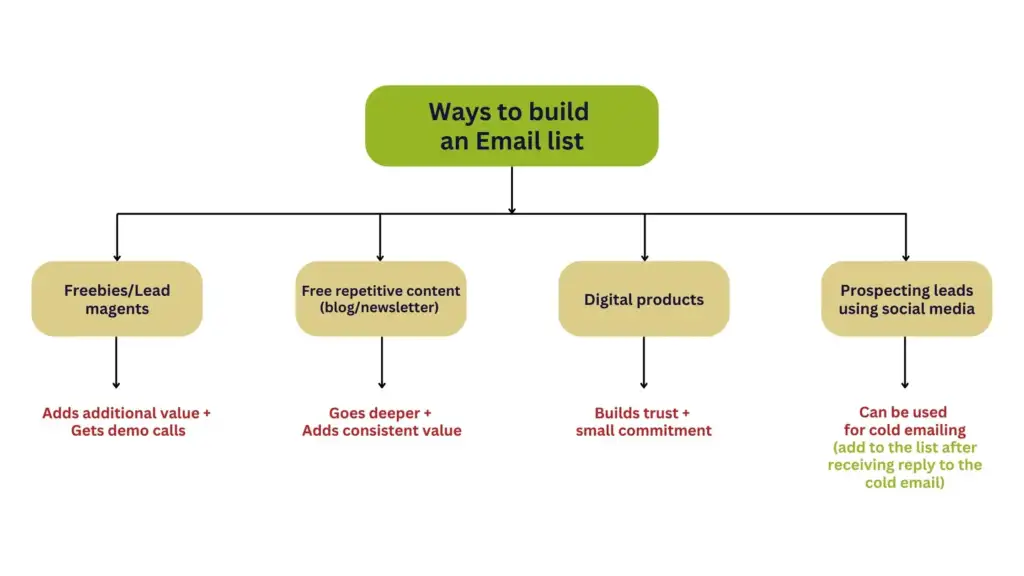
All the channels we have discussed so far are borrowed, meaning you can lose your audience on them. Algorithm updates are famous for reducing traffic on search engines and social media platforms.
But you still have a channel that is not dependent on external factors—your email list. Building and nurturing an email list is one of the most powerful ways to generate leads, convert prospects, and maintain long-term customer relationships independent of any third-party platform.
Create lead magnets such as eBooks, email courses, cheatsheets, PDFs, etc., and strategically display them across your site to gain subscribers.
Once you have a list of those targeted readers who willingly shared their emails to hear more from you, share your business stories through email marketing. Create emails about:
- Behind-the-scenes
- New launches
- Case studies
- Client wins
- Educational content, etc.
Leverage Customer Reviews & UGC
User-generated content (UGC) and customer reviews are effective tools that can greatly improve your brand’s reputation, foster trust with prospective clients, and boost engagement on your digital channels. Utilize the feedback from your pleased clientele to create a profitable client funnel.
Encourage customer reviews through:
Follow-up emails: Send follow-up emails shortly after the customer has purchased your product or service. For example: If you have a self-paced online course, ask for feedback through email after customers have completed 75% of the course.
Use platforms like Google, Yelp, Facebook, etc., to get customers to leave a review. Google reviews are crucial as they appear when someone searches for your brand name. They also signal to Google that your business is worth ranking higher for queries related to your industry.
If possible, encourage user-generated content. Ask users to create videos and social media posts tagging you, leave feedback on forums and surveys, and write blog posts or collaborative content with you.
Build Partnerships And Sponsorships
Want to gain visibility faster? Use a shared audience. Building partnerships and leveraging sponsorships help you tap into new, broader audiences.
This is a win-win method, as you and your partners or sponsors both benefit from the deal. These deals can take many forms. You can ask sponsors to bring you backlinks and mention you in their content while you create promotional content for them.
Or, you can build partnerships with businesses offering related services, and both of you can cross-promote your services. Create co-branded content with these partners, such as webinars, eBooks, or podcasts, in which both brands are featured.
Transform Your Employees into Brand Advocates
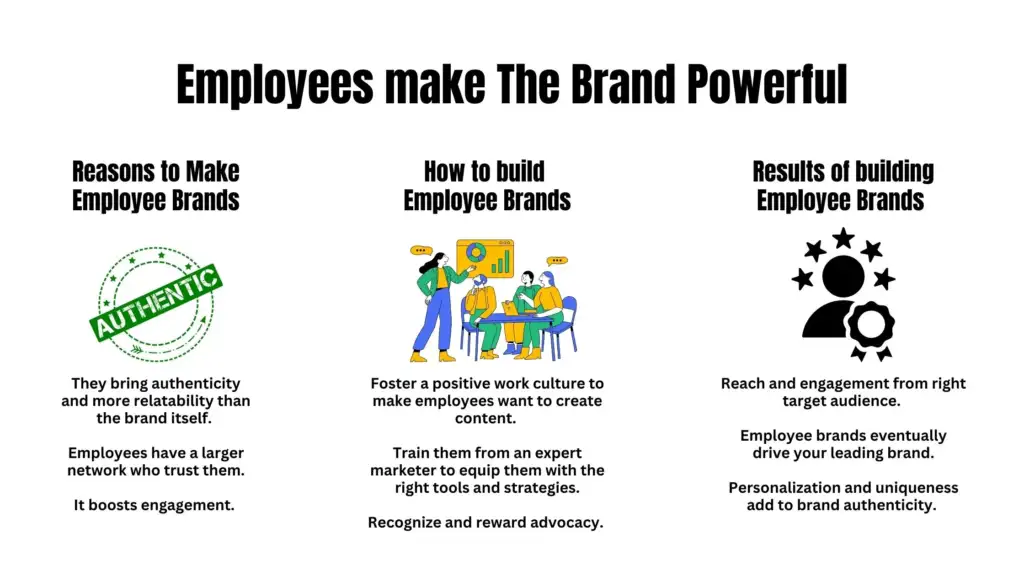
Employees are your greatest assets when building your online brand. Instead of simply using a company page to post on social media, allow your employees to become your brand advocates.
Why Employee Advocacy Matters?
Employees are real people with real connections. Their content has an authentic voice that resonates faster with your target audience. It gives your brand a human touch, which is crucial to maintaining its relevance.
More accounts posting about your brand increase touchpoints with your audience and lead to diverse engagement. Each employee has a unique voice and content to share, which brings diverse yet targeted audiences into your brand’s network.
Steps to Create Employee Advocates
- Encourage a positive work culture that motivates employees to participate in your mission actively
- Provide training, knowledge, tools, and resources employees need to build their personal brands
- Recognize participation through a reward system
Tools Needed For Business Marketing Strategies
SEO (Search Engine Optimization)
1. Google Search Console
2. Google Analytics
3. Ahrefs or SEMrush
4. Rank Math SEO
5. Moz
6. ScreamingFrog
7. Webmasters Tool
8. Answer The Public
9. PageSpeed Insights or GT Metrix
Blogging
1. WordPress
2. Grammarly
3. Canva
4. Hemingway Editor
Social Media Marketing
1. Hootsuite or Buffer
2. Canva
3. Sprout Social
4. BuzzSumo
Video Marketing
1. Adobe Premiere Pro or Final Cut Pro
2. YouTube Studio
3. VidIQ or TubeBuddy
4. Loom
Email Marketing
1. ConvertKit
2. HubSpot
3. OptinMonster
Online Survey and Feedback Tools
1. SurveyMonkey
2. Typeform
Webinar and Online Events
1. Zoom
2. WebinarJam
| Suggested reading: Best Blogging Tools
Monthly Roadmap Template For Online Marketing For Small Businesses
Here’s my monthly roadmap for the online marketing strategy you can customize according to your needs.

Steps Ahead: Make Marketing Your Business Online Easier
I believe now you know how you can market your online business without spending on paid promotion. Follow the steps in this blog and you’ll see traffic and leads flowing in within a few months.
Want to make marketing your business easier? I help small businesses and brands create and implement their online marketing strategy.
Save time to scale your business while leaving the marketing to me. I’d love to help you, too!
Book a 1:1 discovery call now!

